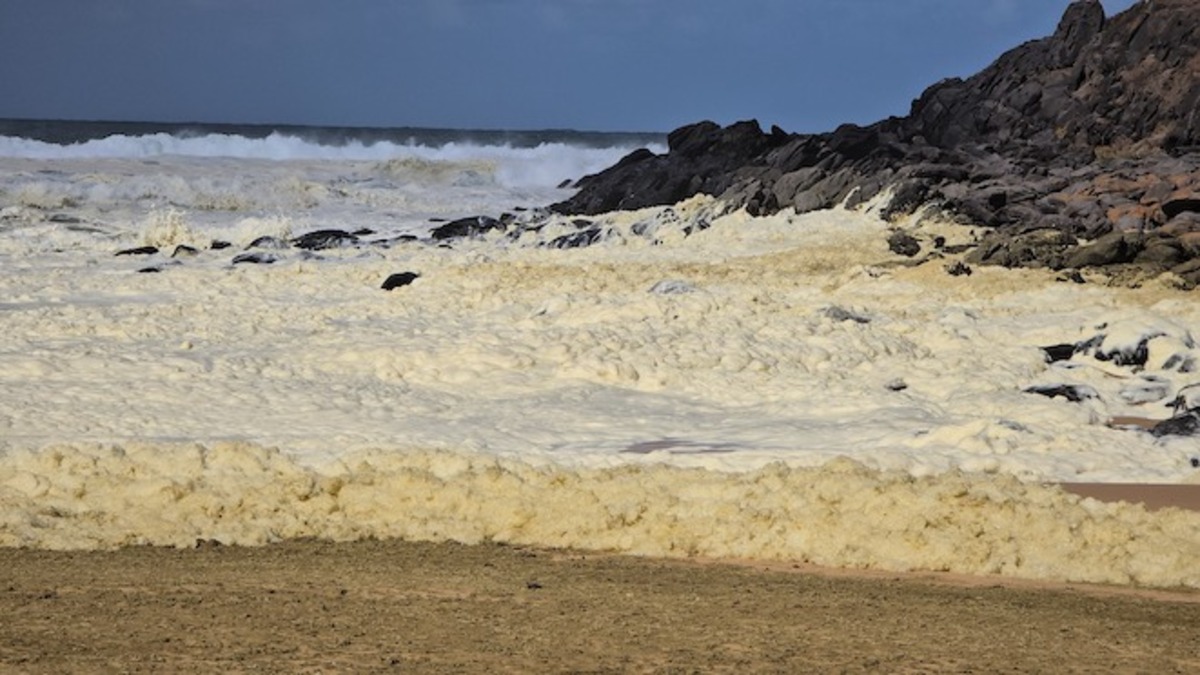Algal bloom causes south coast beach pollution
Julia Beckett
26 March 2025, 1:46 AM
 Image courtesy Anthony Rowland.
Image courtesy Anthony Rowland.The Environment Protection Authority has received results identifying the species Karenia mikimotoi as the cause of the microalgae bloom on the south coast of the Fleurieu Peninsula.
This follows widespread reports of surfers and beachgoers suffering symptoms including coughing and breathing difficulties, itchy eyes and blurred vision.
Dead fish, octopuses and seahorses have washed up on shore and beaches have experienced red staining and excessive foam, with Waitpinga and Parsons beaches closed until further notice.
Sydney scientists Shauna Murray and Greta Gaiani revealed the cause in an article in academic news journal The Conversation on Monday 24 March.
“While relatively common in Australian coastal waters, blooms of K. mikimotoi occur only sporadically. But similar harmful algal blooms and fish kills due to K. mikimotoi have happened in the past, such as the 2014 bloom in Coffin Bay, SA. And this latest one won’t be the last.”
The state government sent water samples to the scientists from Waitpinga Beach, Petrel Cove, Encounter Bay and Parsons Beach on Tuesday 18 March.
Karenia mikimotoi is toxic to fish and invertebrates and can cause general allergic-type responses in humans.
Human exposure, including through breathing in algae particles, can cause respiratory and eye irritation or skin rashes in some people, while ingestion could cause stomach upsets or flu-like symptoms.
Karenia mikimotoi can also cause mass mortalities of marine species at varying concentrations. This species can have a range of health impacts on marine life but is known for impacting on the gills of fish, typically causing mortality.
The EPA expects the microalgae will dissipate naturally over time depending on wind, swell and tidal conditions and they will continue to monitor the bloom.
Over the past week, reports from the public have conveyed sightings of the bloom, and its effects on marine life and humans, from Cape Jervis to Encounter Bay.
Waitpinga Beach and Parsons Beach will remain closed until further notice and people should adhere to the warning signs located at other council-run beaches.
The EPA says the event has been driven by an ongoing marine heatwave, with marine water temperatures currently 2.5C warmer than usual, as well as relatively calm marine conditions with little wind and small swell.
Minister for Climate, Environment and Water Susan Close has encouraged people to avoid the water and shoreline along the affected beaches.
“The EPA will continue to monitor the microalgae bloom and beaches will reopen as soon as it dissipates.
“If people do come into contact with the microalgae, please follow the health advice and wash it off with fresh water.
“With temperatures, including water temperatures, continuing to rise as part of climate change, we need to remain vigilant for these type of events and I thank everyone who took to the time to report the bloom to authorities.”
David Cunliffe is SA Health Principal Water Quality Adviser: “In general, people should avoid contact with discoloured fresh or marine water. If they do enter this water they should take care to wash in clean water afterwards.”
To report conditions contact Fishwatch on 1800 065 522 or report to the EPA on 1800 623 445 or via [email protected]
Read the full scientific article by Professor Murray and Ms Gaiani in The Conversation.